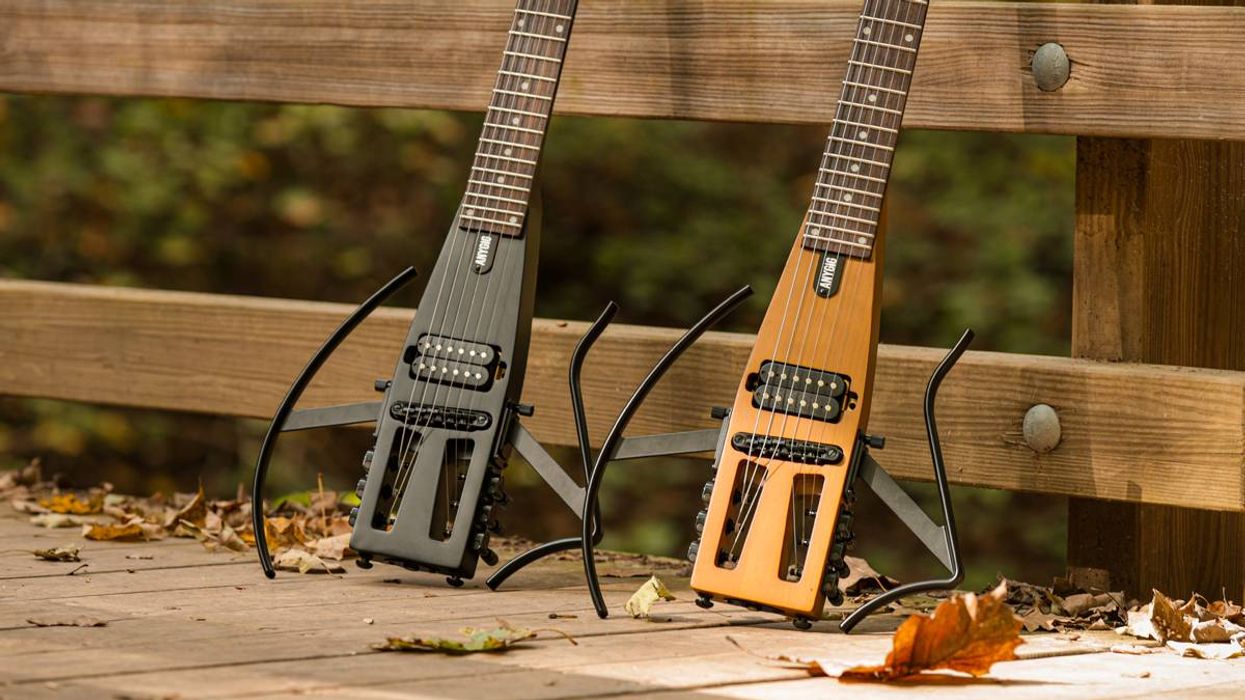RatingsPros:Thoughtful voice and design with remarkably dynamic vintage tones. Responsive gain control. Cons: A little pricey. Street: $229 Greer Amps Soma ’63 greeramps.com | Tones: Ease of Use: Build/Design: Value: |
Fender’s brownface era marks several stepping stones in American amplifier history. It kicked off in 1959 with the debut of the Vibrasonic. But in the short span between that release and the dawn of the blackface era in late 1963, brownface amps would evolve often and introduce many now-familiar Fender features. For starters, the brownface period saw the addition of 2-channel circuitry with separate tone stacks. The 1963 brownface Vibroverb was also the first Fender reverb-and-tremolo-equipped combo. In short, brownface Fenders were the launch pad for design elements that remain the backbone of Fender’s amps to this day. But while they represented a transitional phase in terms of cosmetics, layout, and features, many models also offered unique transitional voices that combined tweed-era grit and compression, and the clean, hi-fi high-headroom signature of the blackface amps that would follow.
Pinning down a definitive brownface voice in a single pedal is nearly impossible. But Greer Amps Soma ’63 is built around a small steel-core transformer and a circuit designed to replicate many facets of the brownface experience, including preamp, power amp, and phase inversion characteristics, and even the breakup of the 10" Utah speakers in the Tremolux, Concert, and Princeton. Whether you view it as a preamp, an amp-in-a-box, or just an excellent overdrive, it offers many tasty dirt-shaping options.
Transformation Comes From Within
One of the key components in the Soma ’63 is its small steel-core transformer, which presumably assumes the duties of a full-sized transformer in an amplifier. Given how variation in transformer size can affect the tone of tube-driven amplifiers, it’s hard to say how much a tiny transformer shapes Soma ’63’s “ampness.” But other excellent preamps like Hudson’s Broadcast use a small steel-core transformer as an effective part of a larger sum. In the Soma ’63, the transformer is situated before the volume control, and the pre-volume saturation is adjusted with the gain knob, which means you can dial up filthy sounds without doubling over from hearing damage. Bass and treble knobs adjust their respective frequencies, while presence brightens or darkens the overall tone post-preamp.
The Soma ’63 can be powered at 9V or 18V with a barrel adaptor. There’s no option for battery connectivity within the unit. The wiring is impeccably soldered. Powered at 9V, Soma is a bit grittier, while 18V operation gives you more headroom.
Burnt, Buttery Tones
There are lots of amp-in-a-box-style pedals. And while some are great, many are less than dynamic—nailing one particular type of tone well, but falling flat when you deviate from that path. In this regard, the Soma ’63 is very different. It succeeds in generating brownface-style drive and works as a flexible tone-sculpting platform. The gain conrol alone has remarkable range. Past 12 o’clock, you’ll start to hear a unique, splatty fuzz that takes brownface overdrive tones into even-nastier realms. P-90s and humbuckers are a great match for these settings, achieving fuzzy textures at lower reaches of the gain spectrum (compared to single-coils) and delivering a fatter overall voice. It’s the kind of filthy, greasy tone that makes it difficult to resist reaching for a slide.
The Soma ’63’s romance with humbuckers and P-90s doesn’t mean Fender-style single coils aren’t a great fit. (There are reasons Mark Knopfler and Dick Dale paired Stratocasters with brownface Fenders, after all.) Parking the gain post-noon with a Stratocaster generates dirty textures with sharp attack. But you only need to roll the gain back to 10 o’clock or so before you start to summon cleaner “Sultans of Swing”-style tones. The beauty of the Soma ’63 in this setup is that it’s dynamic and touch-sensitive, delivering clean finger-picked passages and beefy, filthy sounds when you hit the strings hard with a pick. And it’s here that the pedal really asserts its preamp-style flexibility and sheds the one-trick-pony stigma that plagues many amp-in-a-box stomps. Paired with a Fender DeVille, I used the Soma’s flexible and powerful EQ controls to offset some of the amp’s darker-voiced qualities by adding presence and subtracting bass with the pedal. In this setup, the Stratocaster was cutting, but with all the glassy push/pull dynamic I’ve grown to love in vintage Fender amplifiers.
Placing the Soma ’63 further down your effects chain reveals its ability to function like a true preamp—giving other overdrives and dirt boxes a spongy brownface touch. A Fulltone Full-Drive, for example, excited the Soma into more complex breakup while retaining the natural, amp-like voicing of the Greer effect. But I also noticed that once you push the Soma ’63 into higher gain ranges (past 2 or 3 o’clock, depending on pickups), additional gain effects can muddy the signal. The tones here aren’t necessarily bad, but I was usually inclined to let the Soma ’63 do the talking, or reduce the gain on the first overdrive to act more like a boost for the Soma.
The Verdict
The Soma ’63 is flexible and thoughtfully voiced. Whether you use it as a stand-alone drive pedal or as a preamp platform for your other effects, it can add convincing brownface colors and fuzzier textures few brownface Fender amps could ever generate.












![Rig Rundown: AFI [2025]](https://www.premierguitar.com/media-library/youtube.jpg?id=62064741&width=1245&height=700&quality=70&coordinates=0%2C0%2C0%2C0)



